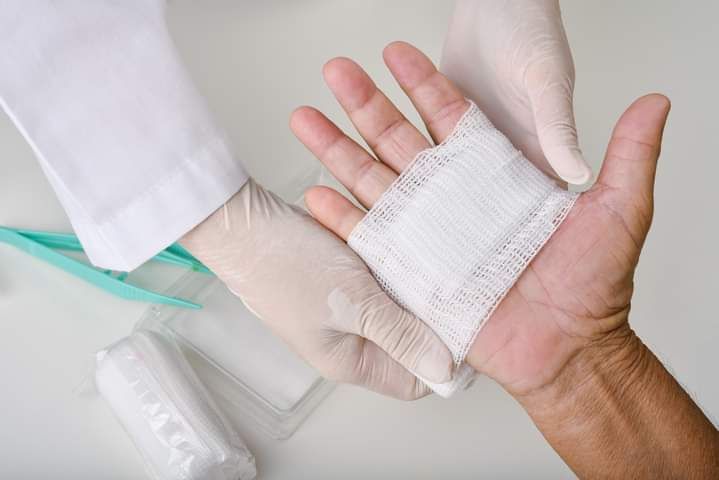If it is inconvenient to go to the hospital, for clean wounds, such as surgical incisions or superficial skin wounds, patients can consider changing dressings at home. This article aims to provide professional guidance to ensure that the process of changing dressings at home is both safe and effective.

Are they suitable for changing dressings at home?
Suitable for clean surgical incisions and superficial skin wounds. Before self-care, you must determine whether the wound is infected. Under normal circumstances, the surgical incision will exude cool liquid and form a light yellow dry scab. If the wound has no pain, redness, swelling, fever, or abnormal secretions, you can consider changing the dressing yourself.
What tools do I need?
The tools needed to change the dressing include disposable masks, disposable gloves, disposable pads, disposable tweezers, iodine, two disposable dressing trays, cotton balls, and functional wound dressings. For small wounds, medical cotton swabs can be used instead. Before using iodine, check whether it is within the shelf life. The opened iodine should be used within 7 days, and do not use cotton swabs or cotton balls to dip it.
Steps for changing dressing :
Remove old dressings:
Wear a disposable mask to prevent droplets from contaminating the wound when speaking, expose the wound area, remove the wound dressing, do not touch the wound, and discard the dressing. If the dressing is sticky, wet the dressing with saline, and then slowly remove the dressing with a wet cotton stick. Wash your hands before changing the dressing, wear disposable sterile gloves, observe the wound healing, and pay attention to the surrounding skin without redness, swelling, heat, pain, secretion color, and odor, if the above situation occurs, seek medical attention immediately.
Renewing dressing:
Use tweezers to pick up a cotton ball, dip it in iodine, and apply iodine in a circular motion from the center of the wound to the outside (the disinfection range is 2 cm larger than the outer edge of the wound), and wipe the wound from the inside to the outside in a circular motion to avoid bringing dirt and bacteria from the outside back into the wound. Use a new cotton ball each time and repeat 2 to 3 times. After the iodine tincture dries naturally, open the sterile dressing, take a corner of the dressing, and cover the wound. Wash your hands after changing the dressing.

Operation tips:
During the process of changing the dressing, if you find signs of infection in the wound, such as redness, swelling, pain, fever, or abnormal secretions, you should stop treating it yourself and go to the hospital as soon as possible. Keep the wound dry and avoid soaking it in water for a long time. Observe the wound healing regularly and seek medical attention in time if there is any abnormality.
By following the steps above, patients can safely and effectively change dressings at home. However, this is not a substitute for the advice and treatment of a healthcare professional. In any case of uncertainty, professional medical help should be sought.
For more information on Innomed®Hydrocolloid Dressing, Refer to the Previous Articles. If you have customized needs, you are welcome to contact us; You Wholeheartedly. At longterm medical, we transform this data by Innovating and Developing Products that Make Life easier for those who need loving care.
Editor: kiki Jia

 English
English عربى
عربى Español
Español русский
русский 中文简体
中文简体








